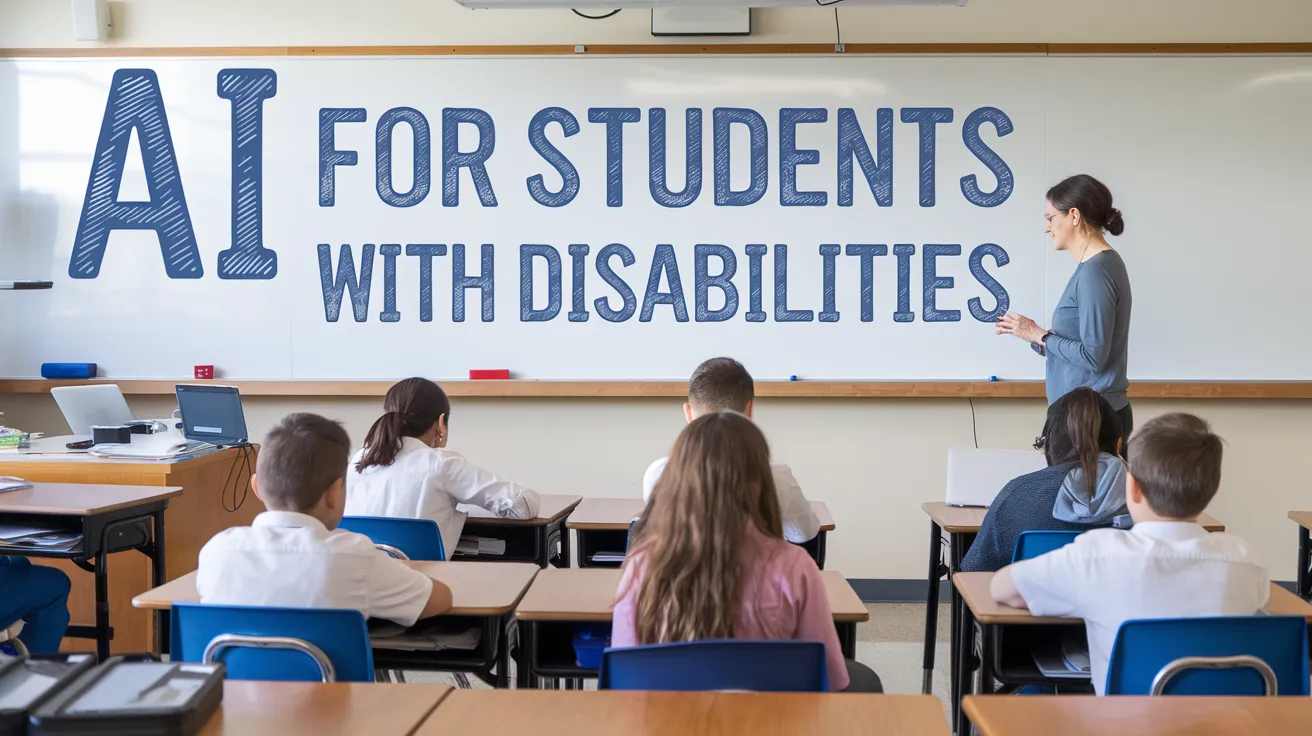AI for Students with Disabilities

For many students with disabilities, like 14-year-old Makenzie Gilkison from suburban Indianapolis, traditional learning can be a significant challenge. Makenzie, dealing with dyslexia, has struggled immensely with tasks that come easily to her peers, such as spelling. However, with the aid of assistive technology powered by artificial intelligence, her experience has improved dramatically. This technology has not only enabled her to keep up with classmates but also allowed her to excel academically, as evidenced by her recent induction into the National Junior Honor Society.
The transformative potential of artificial intelligence promises to assist countless other students facing various challenges, including visual, speech, language, and hearing impairments. Schools across the nation are grappling with the integration of these advanced technologies, yet many are prioritizing their application for students with disabilities. The U.S. Education Department emphasizes the necessity of providing tools like text-to-speech and alternative communication devices to students in need, alongside new regulations that mandate accessibility for all educational content.
Despite these advancements, concerns linger regarding how students using these technologies are learning and progressing. AI tools can help summarize thoughts, translate complex texts, and provide support for visually impaired and dyslexic students through more natural-sounding synthetic voices. Educational therapist Alexis Reid noted that students often perceive AI as a tool that allows them to engage with their studies more effectively—comparable to finding a cheat code in a video game—while noting that this does not equate to cheating; rather, it meets them at their level of need.
Another student, Ben Snyder, recently diagnosed with a learning disability, has found great utility in AI applications for his coursework. He highlights how AI can offer diverse explanations for complex math problems, significantly enhancing his understanding. He is careful, however, not to see AI as a substitute for genuine effort in learning, asserting that completely relying on technology for assignments would be crossing an ethical boundary.
As educators devise ways to maximize technology’s benefits while avoiding pitfalls, the capacity of AI to level the playing field for students is being recognized. Yet, there are genuine concerns that reliance on these tools could lead to students being steered into less rigorous academic paths due to predetermined biases within AI systems. Luis Pérez from the Center for Accessible Technology raised ethical considerations, pointing out the risk of AI disclosing a student’s disability status without their input, which could lead to significant privacy issues.
In Iowa, a proactive approach is already being enacted, with new laws mandating individualized reading plans for students deemed not proficient. This approach includes a $3 million investment in an AI-driven personalized tutoring program designed to support students facing academic difficulties. As developments continue, AI integration in education seems poised for growth, with a focus on research funded by the U.S. National Science Foundation aiming to enhance tools for children with communication difficulties further.
However, despite the exciting advancements, some students experience frustration due to the complexities of navigating various programs. Makenzie expressed a desire for more user-friendly tools and efficiency in problem-solving. On the other hand, her mother, Nadine Gilkison, an educational technology supervisor, expressed optimism about AI’s potential. She noted the emotional impact this technology has had on educators, who previously struggled to deliver the necessary support to students effectively.